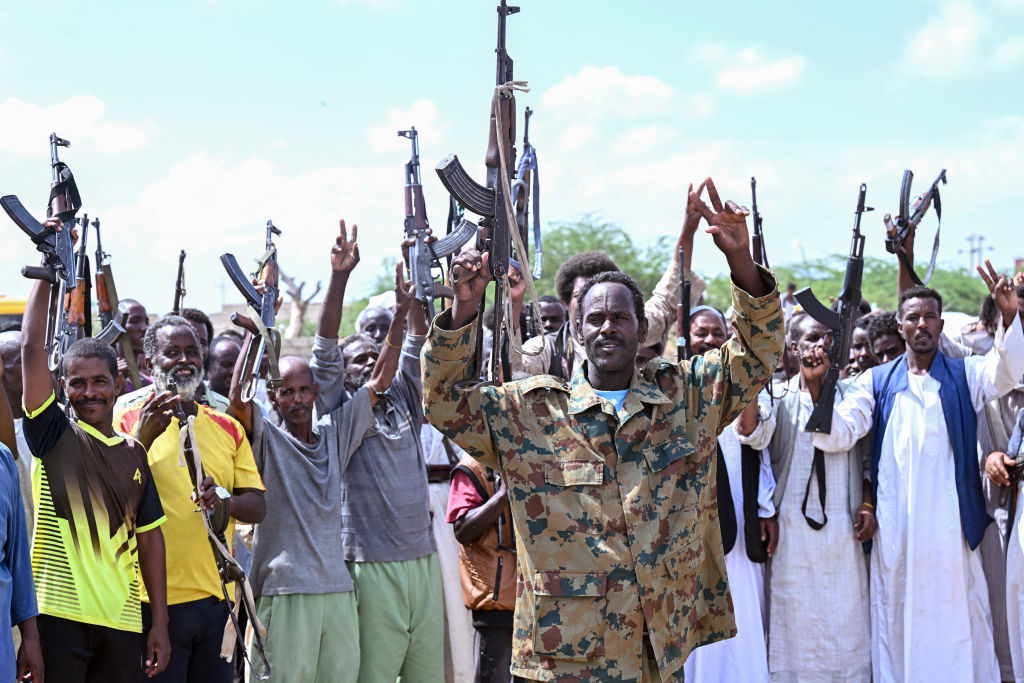ADF STAFF
After more than 18 months, Sudan’s war appears to be descending into a nationwide ethnic conflict, according to a group of Sudanese peace advocates.
“Both sides have dangerously escalated their war narratives, fueling ethnically charged rhetoric that mobilizes communities along ethnic and regional lines,” the Advocacy Group for Peace in Sudan (AGPS) said in a public statement.
The group has warned of rising tribal loyalty and resentment in key regions of the country, especially in the Butana Plains and eastern Sudan as well as the Darfur and Kordofan regions, Nile River and Northern states.
The Sudanese Armed Forces (SAF) and the paramilitary Rapid Support Forces (RSF) have attacked communities in areas controlled by their opponents: Darfur, Kordofan and el-Gezira in the case of the SAF, and eastern el-Gezira in the case of the RSF. The attacks have killed civilians, increased displacement and damaged infrastructure.
According to Radio Dabanga, the RSF’s attacks in el-Gezira state happened after Abu Agla Keikil, a local commander, defected to the SAF along with some of his troops. Residents of the el-Butana area of southeast Sudan have warned of severe retaliation by the RSF, raising the prospect of a deadly cycle of vengeance.
The ongoing attacks are pushing local leaders to call for targeting communities associated with the SAF and RSF to seek revenge.
“This alarming escalation risks tipping the conflict into a catastrophic phase of tribal and regional alignment, threatening widespread massacres and an immense human tragedy,” the AGPS said.
In April 2023, the SAF and RSF turned Sudan into a war zone as their leaders, SAF Gen. Abdel Fattah al-Burhan, de facto leader of the country, and Gen. Mohamed Hamdan “Hemedti” Dagalo, head of the RSF, launched a battle to control the country.
The RSF quickly swept through southern Sudan from Darfur in the west to Sennar in the east, while the SAF consolidated control of the northern and northeastern regions, effectively splitting the country.
In recent months, the SAF has taken back key areas, including parts of Omdurman in the capital region. It also has held North Darfur, thanks to an alliance with Darfur-based militias the Justice and Equality Movement (JEM) and the Sudan Liberation Movement (SLM), which united earlier this year to form the Sudanese Joint Force to confront the RSF in western Sudan.
The two militias took a neutral position at the start of the SAF-RSF conflict, choosing to defend their communities in Darfur from all assaults. As the RSF conquered most of Darfur, leaving chaos and disaster in its wake, SLM and JEM sided with the national military.
The rise of the non-Arab Sudanese Joint Force as a counter to the Arab-based RSF broadly reflects the ethnic divisions in the Darfur region and, more broadly, across Sudan as a whole.
Sudan is a mix of 500 ethnic groups that include the ethnic Arabs that dominate the population, along with non-Arab groups such as the Nuba in the south, and the Fur, Masalit and Zaghawa that are rooted in Darfur.
The war has worsened the ethnic fragmentation that has plagued Sudan for more than 50 years. In the process, the war has transformed into multiple small wars as armed militias ally themselves with the SAF or the RSF.
“Communities that were once living in peace have now taken up arms to defend themselves from the RSF, marking a significant departure from the past,” the Armed Conflict Location and Event Data organization (ACLED) wrote in a recent report on Sudan.
The AGPS has warned that the ethnic violence risks sending Sudan on a path toward genocide similar to the one that took place in Rwanda 30 years ago.
“The warring factions and agitators must be held accountable for the genocidal crimes starkly looming on the horizon,” the group said in a statement. “Sudan stands on the brink.”
The post Sudan Approaches ‘Catastrophic Phase’ of Ethnic Violence appeared first on Africa Defense Forum.


